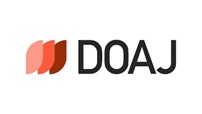Abstract
Digital economy has grown rapidly so that the new business area called `Internet business` has been dramatically extended as time goes on. However, in the case of Internet business, market shares of individual companies seem to fluctuate very extremely. Thus marketing managers who operate the Internet sites have seriously observed the competition structure of the Internet business market and carefully analyzed the competitors` behavior in order to achieve their own business goals in the market. The newly created Internet business might differ from the offline ones in management styles, because it has totally different business circumstances when compared with the existing offline businesses. Thus, there should be a lot of researches for finding the solutions about what the features of Internet business are and how the management style of those Internet business companies should be changed. Most marketing literatures related to the Internet business have focused on individual business markets. Specifically, many researchers have studied the Internet portal sites and the Internet shopping mall sites, which are the most general forms of Internet business. On the other hand, this study focuses on the entire Internet business industry to understand the competitive circumstance of online market. This approach makes it possible not only to have a broader view to comprehend overall e-business industry, but also to understand the differences in competition structures among Internet business markets. We used time-series data of Internet connection rates by consumers as the basic data to figure out the competition patterns in the Internet business markets. Specifically, the data for this research was obtained from one of Internet ranking sites, `Fian`. The Internet business ranking data is obtained based on web surfing record of some pre-selected sample group where the possibility of double-count for page-views is controlled by method of same IP check. The ranking site offers several data which are very useful for comparison and analysis of competitive sites. The Fian site divides the Internet business areas into 34 area and offers market shares of big 5 sites which are on high rank in each category daily. We collected the daily market share data about Internet sites on each area from April 22, 2008 to August 5, 2008, where some errors of data was found and 30 business area data were finally used for our research after the data purification. This study performed several empirical analyses in focusing on market shares of each site to understand the competition among sites in Internet business of Korea. We tried to perform more statistically precise analysis for looking into business fields with similar competitive structures by applying the cluster analysis to the data. The research results are as follows. First, the leading sites in each area were classified into three groups based on averages and standard deviations of daily market shares. The first group includes the sites with the lowest market shares, which give more increased convenience to consumers by offering the Internet sites as complimentary services for existing offline services. The second group includes sites with medium level of market shares, where the site users are limited to specific small group. The third group includes sites with the highest market shares, which usually require online registration in advance and have difficulty in switching to another site. Second, we analyzed the second place sites in each business area because it may help us understand the competitive power of the strongest competitor against the leading site. The second place sites in each business area were classified into four groups based on averages and standard deviations of daily market shares. The four groups are the sites showing consistent inferiority compared to the leading sites, the sites with relatively high volatility and medium level of shares, the sites with relatively low volatility and medium level of shares, the sites with relatively low volatility and high level of shares whose gaps are not big compared to the leading sites. Except `web agency` area, these second place sites show relatively stable shares below 0.1 point of standard deviation. Third, we also classified the types of relative strength between leading sites and the second place sites by applying the cluster analysis to the gap values of market shares between two sites. They were also classified into four groups, the sites with the relatively lowest gaps even though the values of standard deviation are various, the sites with under the average level of gaps, the sites with over the average level of gaps, the sites with the relatively higher gaps and lower volatility. Then we also found that while the areas with relatively bigger gap values usually have smaller standard deviation values, the areas with very small differences between the first and the second sites have a wider range of standard deviation values. The practical and theoretical implications of this study are as follows. First, the result of this study might provide the current market participants with the useful information to understand the competitive circumstance of the market and build the effective new business strategy for the market success. Also it might be useful to help new potential companies find a new business area and set up successful competitive strategies. Second, it might help Internet marketing researchers take a macro view of the overall Internet market so that make possible to begin the new studies on overall Internet market beyond individual Internet market studies.
Recommended Citation
Park, Yoon Seo and Kim, Yong Sik
(2011)
"한국 인터넷사이트들의 산업별 경쟁유형에 대한 탐색적 연구,"
Asia Marketing Journal: Vol. 12
:
Iss.
4
, Article 4.
Available at: https://doi.org/10.53728/2765-6500.1270
Creative Commons License

This work is licensed under a Creative Commons Attribution 4.0 License.





